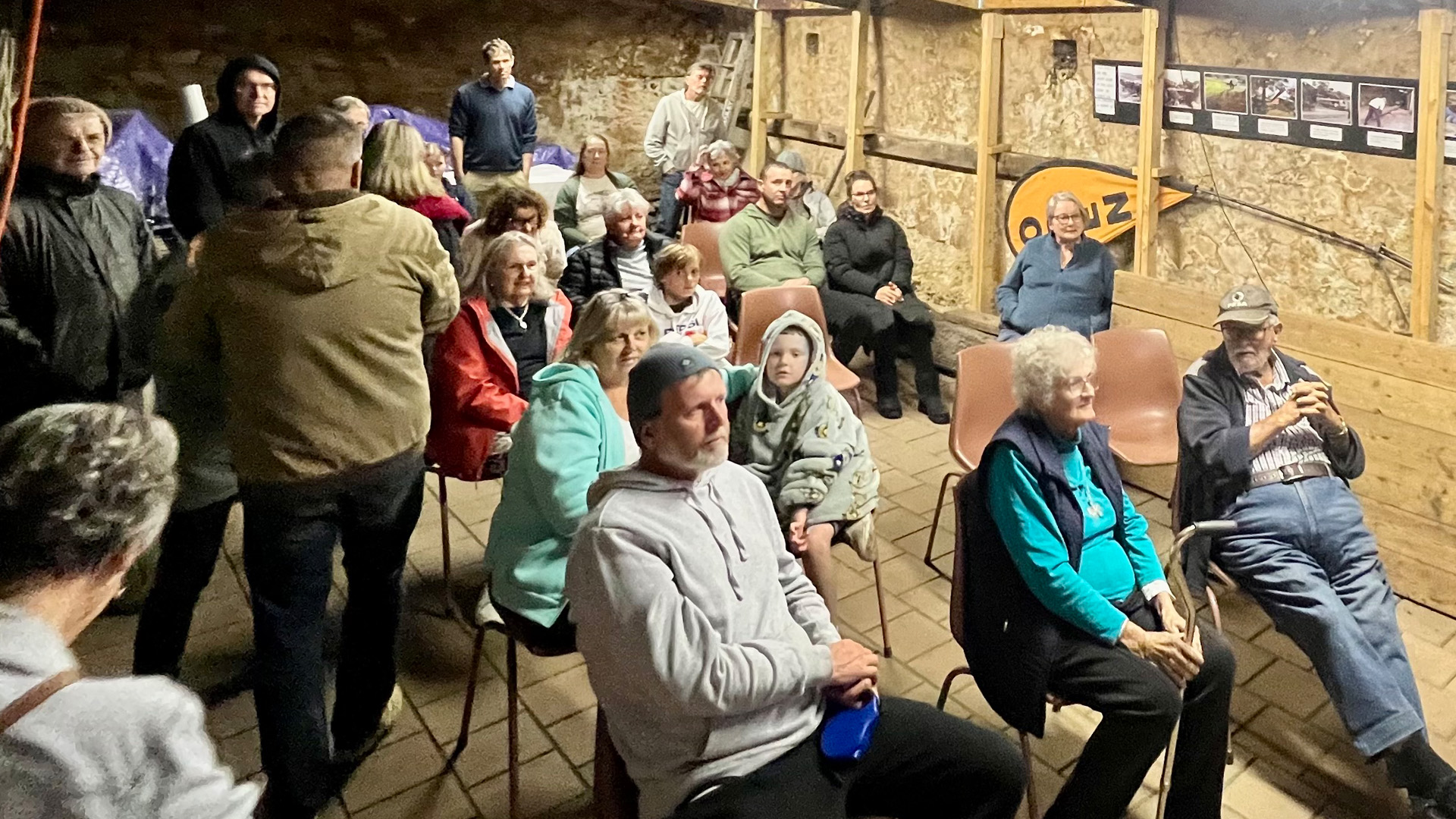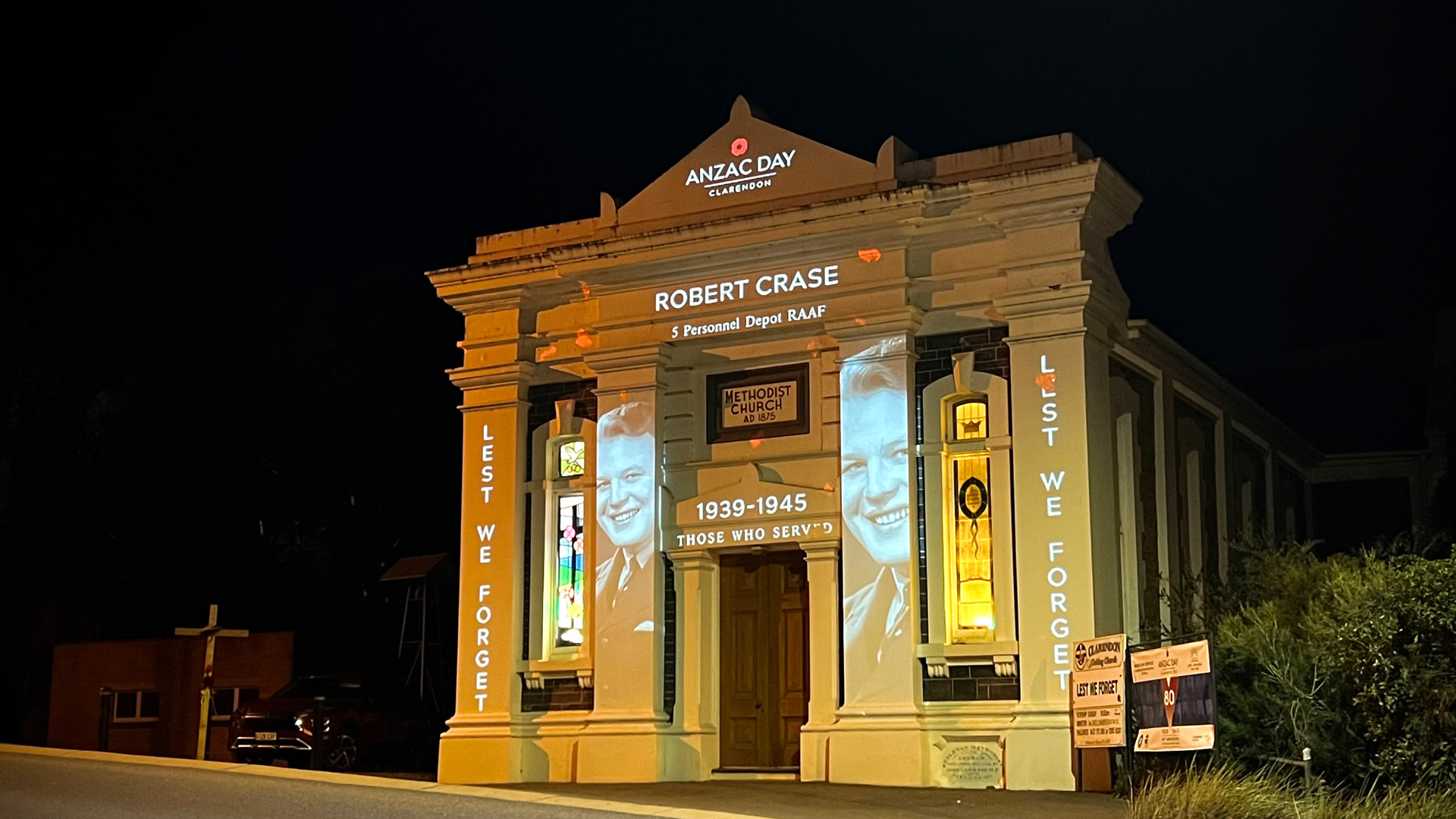Aug 2025
Clarendon community honours local service on the 80th anniversary of the end of WWII
The community of Clarendon in the Adelaide Hills has come together for a project to commemorate the 80th anniversary of the end of World War II, using film and lights to tell the township’s story of resilience and hope during the war.
Led by volunteers at the Clarendon Museum, the project’s centrepiece is a 27-minute, narrative-driven documentary containing archival war footage and interview recollections from both locals who were children when war broke out and those who had parents who served.
Volunteers also hosted a three-night Light Memorial event in the lead up to Anzac Day, projecting WWII imagery onto three of Clarendon’s landmark buildings including the Historic Hall built in 1856 and the Uniting Church build in 1875.
Clarendon Museum volunteer, Brad Pickford, said the significance of the 2025 WWII anniversary made it the obvious choice for the topic of this year’s documentary and light show.
This year’s Victory in the Pacific Day on 15 August marks 80 years since Japan accepted the Allied Nations’ terms of surrender and Australia’s Prime Minister Ben Chifley announced that the war was over.
Approximately 40,000 Australians died during WWII; of the seven Clarendon servicemen who died, five were killed in action (Ron Giles, Peter Piggott, Merton Loud, Len Carr, and Cecil Smart) whilst Alick Powell and Stuart Formby each died from illnesses.
Of the documentary, Mr Pickford said: “We tackled a big subject with this documentary – it chronicles everyday life amidst the turmoil of World War II and captures the challenges faced by residents as they navigated work, school, and the profound impacts of war, including the loss of loved ones.
“The research took around 60 hours over three months – it was done by me, and two other volunteers, Jo Horsnell and Laurel Jared.

Visitors gather in the Clarendon Museum Stables to witness the documentary’s launch.
“Including the filming, editing, graphics, etcetera, the documentary is the result of about 200 hours of work. We had some reservations about whether people would stay engaged for the full 27 minutes but were thrilled with the enthusiastic praise and appreciation for the film.
“We believe that featuring real people sharing their personal stories played a key role in keeping viewers engaged from start to finish.”
Watch the documentary, WWII – Clarendon’s Story of Resilience and Hope, on YouTube.
The Clarendon Museum project was supported by $14,000 in grant funding from the 80th Anniversary of the end of World War II Grant Fund, managed by Veterans SA on behalf of the Government of South Australia.



